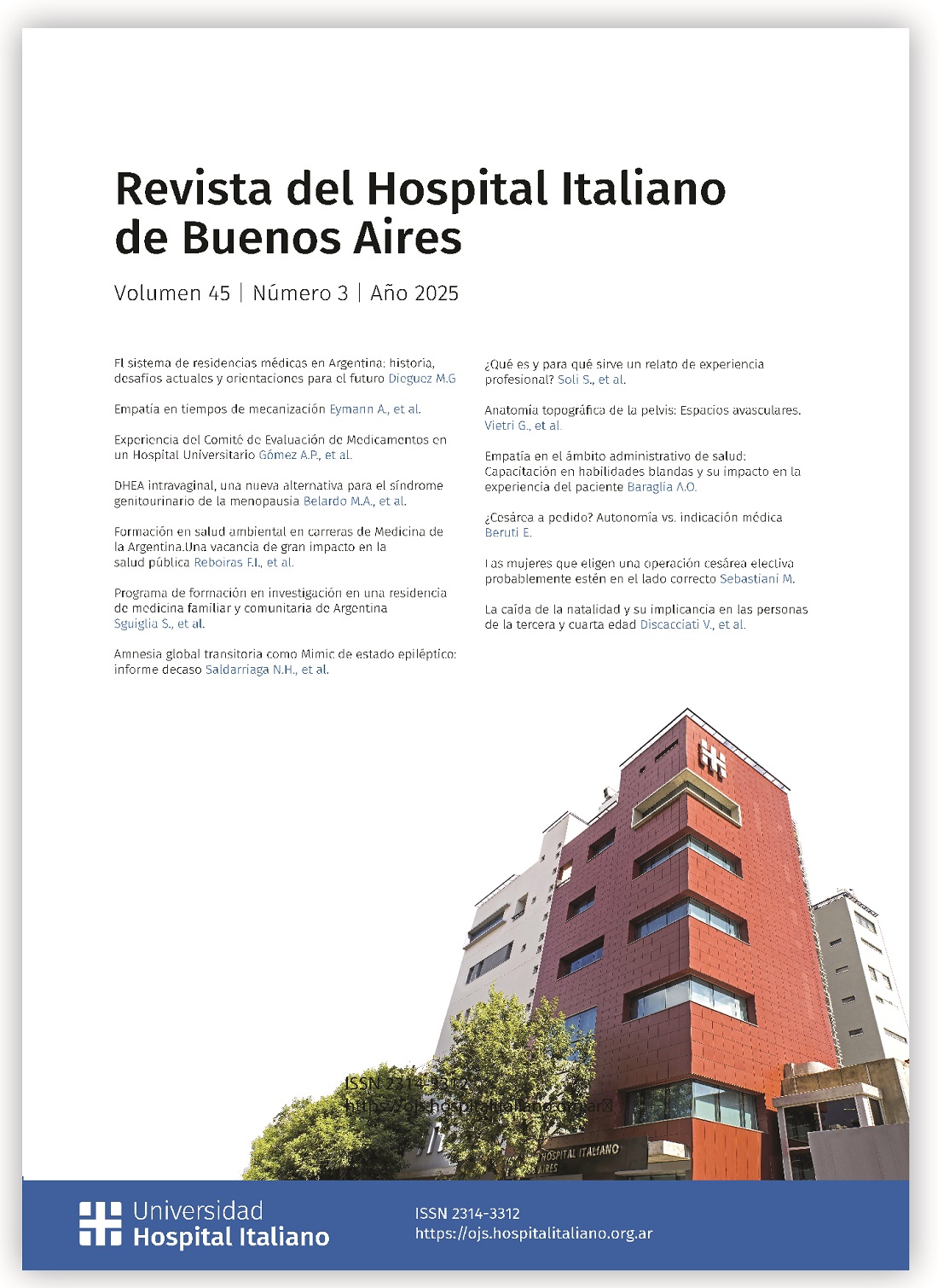¿Cesárea a pedido? Autonomía vs. indicación médica
Contenido principal del artículo
Resumen
La cesárea sin indicación médica plantea un dilema ético entre autonomía y responsabilidad profesional. El parto vaginal, en embarazos de bajo riesgo, ofrece mayores beneficios y menor riesgo. El rol médico es acompañar, informar y cuidar, priorizando siempre la salud materna y neonatal por sobre la simple demanda.
Downloads
Detalles del artículo
Sección

Esta obra está bajo una licencia internacional Creative Commons Atribución-NoComercial-CompartirIgual 4.0.
Cómo citar
Referencias
Betrán AP, Ye J, Moller AB, Zhang J, et al. The increasing trend in caesarean section rates: global, regional and national estimates: 1990-2014. PLoS One. 2016;11(2):e0148343. https://doi.org/10.1371/journal.pone.0148343. DOI: https://doi.org/10.1371/journal.pone.0148343
Sandall J, Tribe RM, Avery L, et al. Short-term and long-term effects of caesarean section on the health of women and children. Lancet. 2018;392(10155):1349-1357. https://doi.org/10.1016/S0140-6736(18)31930-5. DOI: https://doi.org/10.1016/S0140-6736(18)31930-5
International Federation of Gynecology and Obstetrics; International Confederation of Midwives; White Ribbon Alliance; et al. Mother-baby friendly birthing facilities. Int J Gynaecol Obstet. 2015;128(2):95-99. https:// doi.org/10.1016/j.ijgo.2014.10.013. DOI: https://doi.org/10.1016/j.ijgo.2014.10.013
World Health Organization. Department of Reproductive Health and Research. Statement on caesarean section rates [Internet]. Geneva: WHO; 2015 [citado 2025 ago 20]. Disponible en: https://iris.who.int/bitstream/handle/10665/161442/WHO_RHR_15.02_eng.pdf.

